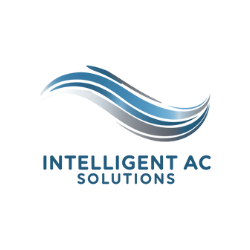Energy Recovery refers to the process of capturing and reusing energy that would otherwise be wasted in air conditioning systems. In the context of air conditioning units and installation, energy recovery systems are designed to improve overall efficiency by transferring energy from one part of the system to another. For example, when warm air is expelled from a building, an energy recovery ventilator can capture some of that heat and use it to pre-warm incoming cold air. This not only reduces the amount of energy needed to heat or cool the air but also enhances the comfort level within the space.
Implementing energy recovery systems can lead to significant cost savings on energy bills. By reusing energy, air conditioning units can operate more efficiently, which means they consume less electricity. This is particularly important in commercial buildings where energy costs can be substantial. Additionally, energy recovery contributes to a more sustainable environment by reducing the overall energy demand and lowering greenhouse gas emissions.
Moreover, energy recovery systems can improve indoor air quality. By continuously exchanging stale indoor air with fresh outdoor air while minimizing energy loss, these systems help maintain a healthier living or working environment. This is especially beneficial in tightly sealed buildings where ventilation is limited.
At our company, we specialize in the installation of advanced energy recovery systems for air conditioning units. Our team is dedicated to helping clients maximize their energy efficiency while ensuring optimal comfort. By choosing to integrate energy recovery into your HVAC system, you are making a smart investment in both your wallet and the planet.
Common Mechanisms
Energy recovery in air conditioning units is essential for enhancing efficiency and reducing energy costs. One common mechanism is the Heat Recovery Ventilator (HRV). This device captures heat from exhaust air and transfers it to incoming fresh air, minimizing the energy needed to heat or cool the space. Another important mechanism is the Energy Recovery Ventilator (ERV), which not only transfers heat but also moisture between incoming and outgoing air streams. This helps maintain indoor humidity levels while conserving energy.
Additionally, Variable Refrigerant Flow (VRF) systems are gaining popularity. These systems allow for simultaneous heating and cooling in different zones of a building, optimizing energy use by adjusting the refrigerant flow based on demand. Desiccant wheels are also used in some advanced systems; they absorb moisture from the air, which can then be released when heated, effectively recovering energy that would otherwise be wasted.
Lastly, thermal energy storage systems store excess energy during off-peak hours and release it during peak demand, balancing energy loads and reducing costs. By implementing these energy recovery mechanisms, air conditioning units can operate more efficiently, leading to lower energy consumption and reduced environmental impact.
Related Factors
Energy Recovery Ventilation (ERV): This system captures energy from exhaust air and uses it to precondition incoming fresh air. By transferring heat and moisture, ERVs improve indoor air quality while reducing the energy needed for heating and cooling. This process enhances the efficiency of air conditioning units, making them more environmentally friendly.
Heat Exchanger: A crucial component in energy recovery systems, the heat exchanger facilitates the transfer of thermal energy between outgoing and incoming air streams. This device allows for the recycling of energy, minimizing the load on air conditioning units and leading to lower energy costs.
Seasonal Energy Efficiency Ratio (SEER): This rating measures the cooling efficiency of air conditioning units over a typical cooling season. Higher SEER ratings indicate better energy efficiency, which is essential when considering energy recovery systems. Units with high SEER ratings work more effectively with energy recovery technologies.
Return on Investment (ROI): In the context of energy recovery, ROI refers to the financial benefits gained from installing energy-efficient systems compared to the initial costs. A good ROI indicates that the energy savings from using energy recovery systems outweigh the installation and maintenance expenses.
Building Automation Systems (BAS): These systems control and monitor HVAC operations, including energy recovery processes. By optimizing performance, BAS can enhance energy efficiency, ensuring that air conditioning units operate at their best while reusing energy effectively.
